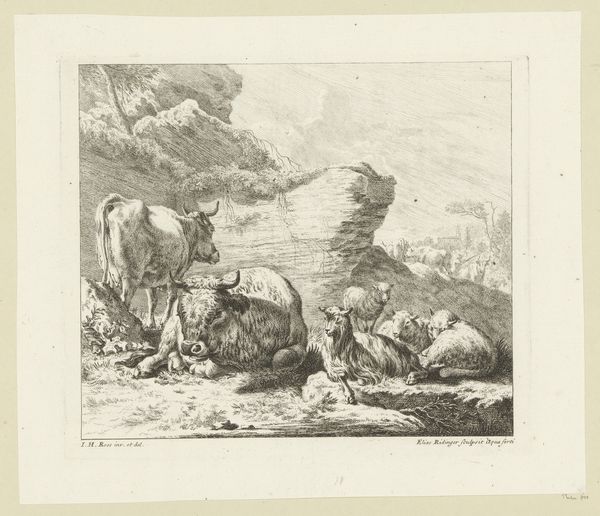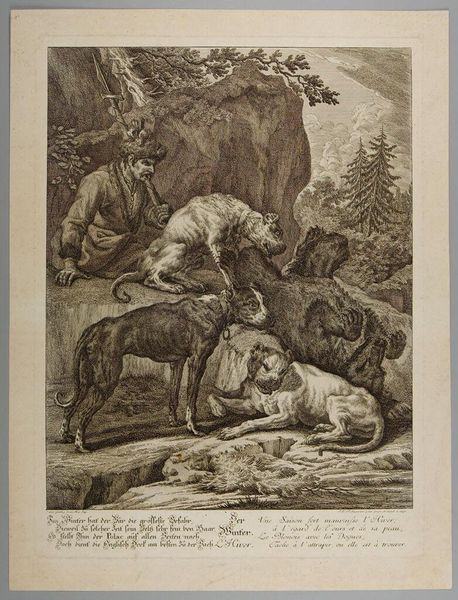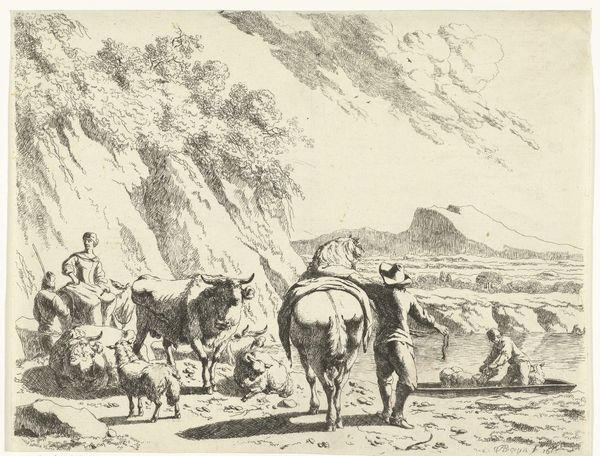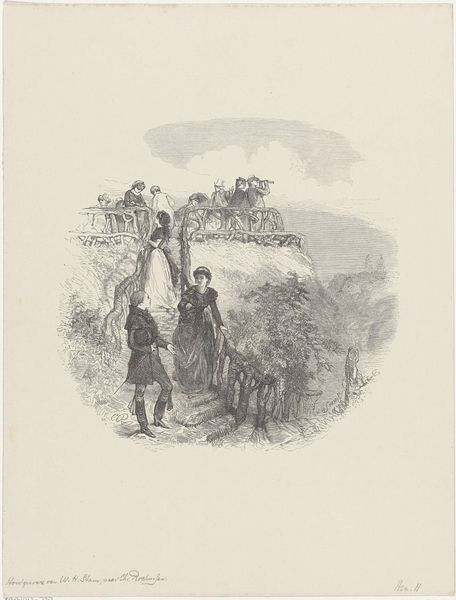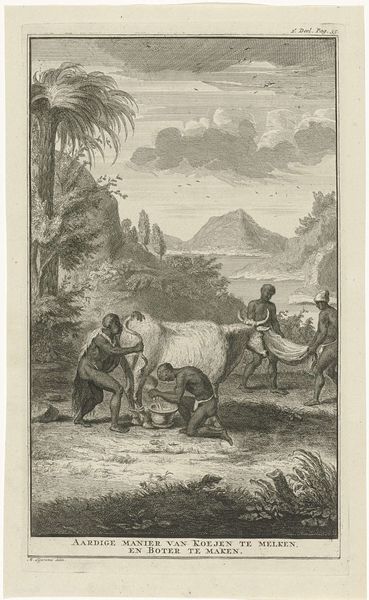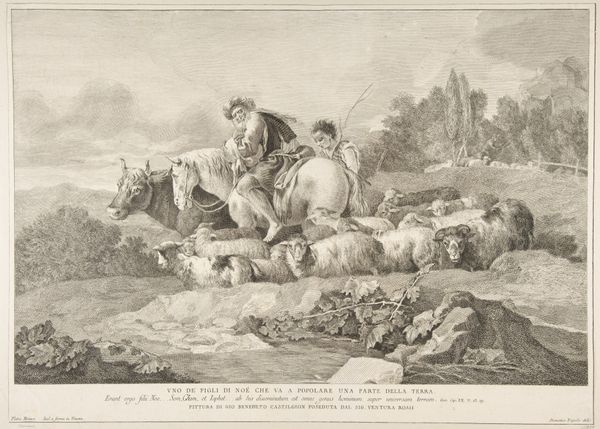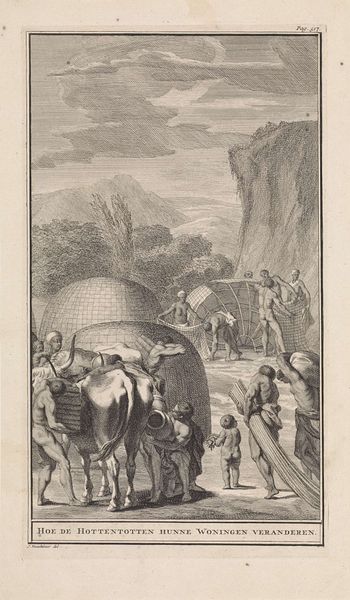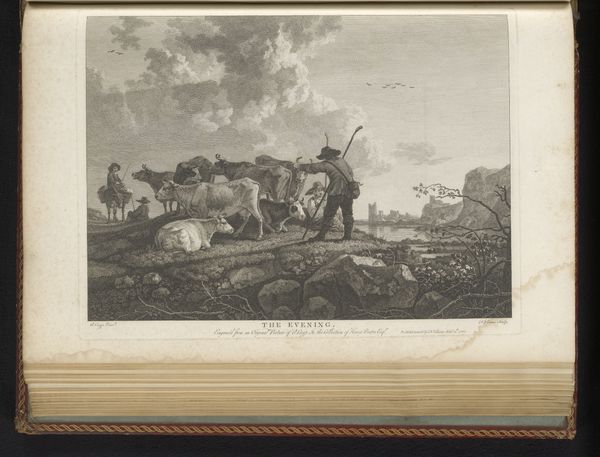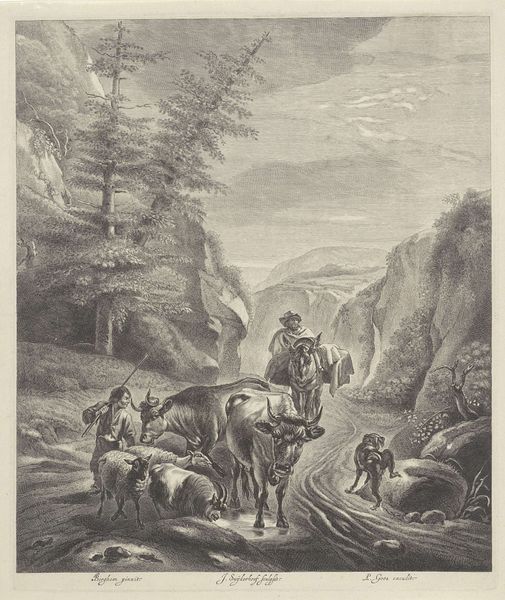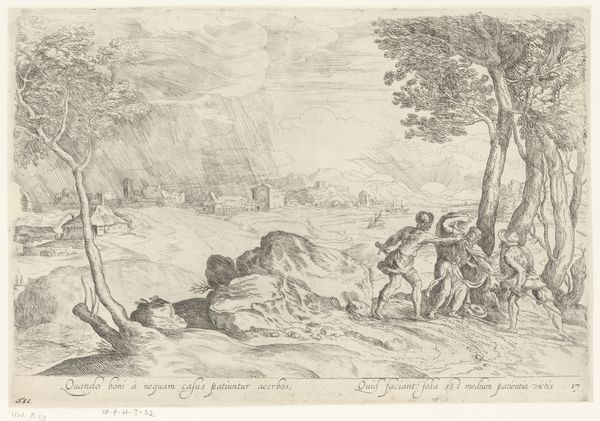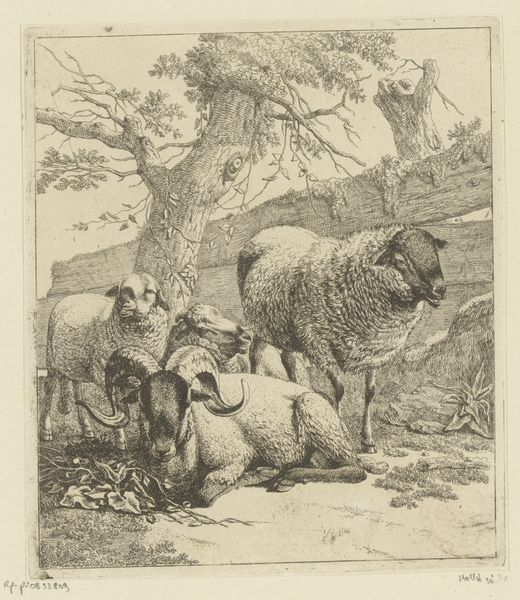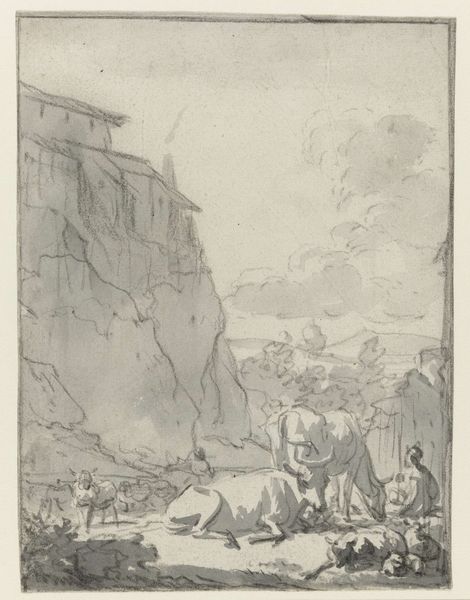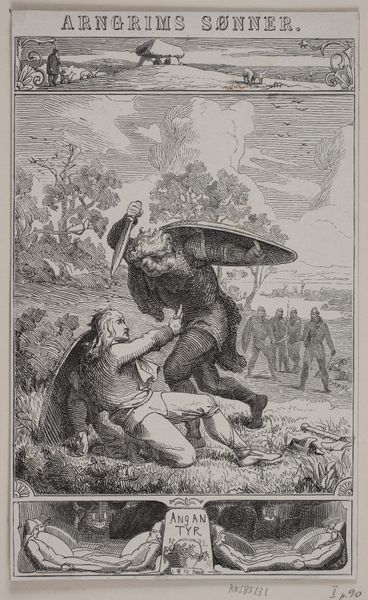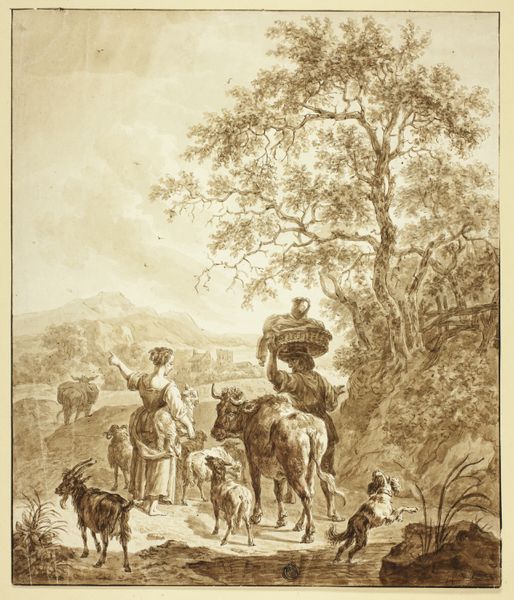
Copyright: Public Domain: Artvee
Curator: Ah, there's something so immediately comforting about this drawing. It feels like looking into a memory, a glimpse into a simpler time. Editor: You’re drawn in by the haystacks, too? When I first looked at “Haymakers of Eragny,” circa 1896, I found my mind swamped by an echo of Millet, Courbet and social realism, replaying centuries of images of the agrarian worker, a familiar visual rhythm of toil, sweat, and reward. Curator: Definitely, but it's Pissarro's specific lens. It feels intimate. The way the figures are arranged around that central haystack, it’s almost like a stage set for some unspoken drama of rural life. I can practically smell the hay and feel the sun on my face. It’s the sensory that makes it so compelling to me. What do you see when you linger longer? Editor: Notice how he positions these peasant figures at the heart of the scene and emphasizes how they use their bodies in unison to complete this essential harvest task. Pissarro builds upon the existing symbol, echoing this romantic view of a society that honors agrarian tradition; but here we feel he hints to a wider, unspoken reality, even of class conflict? Curator: You might be on to something there. I agree it doesn't wallow in misery, it’s much too light for that. Pissarro captures a kind of resilient beauty, a defiance even, in the everyday. The haystacks themselves, so softly rendered in pencil, they take on an almost monumental quality. I like that interplay of monumental and meek. Editor: This pencil drawing reveals how Pissarro’s seemingly “realistic” image acts more like a mirror. These peasants symbolize generations and a complex web of inherited social values and inequalities. I wonder if the scale suggests any relationship with monuments—a call to give more value to something otherwise unregarded, for example. Curator: Oh, I love that thought, seeing them not as victims but active participants. He’s celebrating a way of life but maybe acknowledging that these moments are also fleeting. It makes the image vibrate with a lovely tenderness. So what does that tell you about our connection to the land, this echo that we hear from this humble image? Editor: Ultimately, perhaps we recognize that our connection to it is always a dialogue between reality and the stories we tell ourselves about it, shaped by the symbolic language we use. This drawing has certainly set a scene for us to reconsider ours. Curator: And what a beautifully observed little scene it is! I find myself wondering how many harvests have passed since Pissarro set to sketching that very moment, each one leaving a unique mark, each stack holding stories yet to be told.
Comments
No comments
Be the first to comment and join the conversation on the ultimate creative platform.
